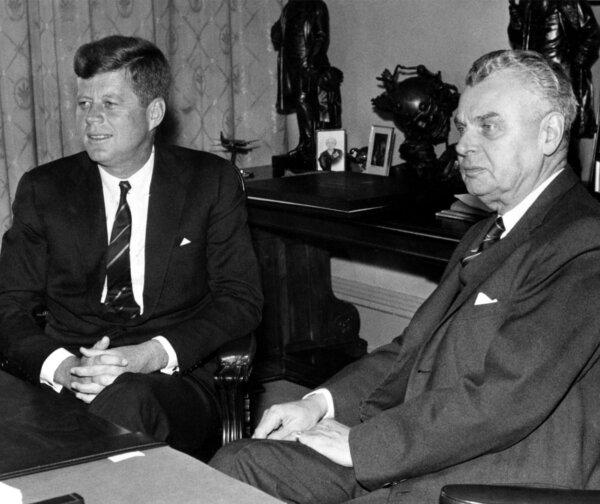The Canadian Experience during the Cuban Missile Crisis: Testing NORAD’s Strength
Commentary
On the evening of Oct. 22, 1962, President John F. Kennedy made a dramatic appearance on television to announce that the Soviet Union had taken the intolerable step of installing offensive missiles in Cuba, just 90 miles from the mainland United States. Kennedy’s appearance was followed shortly after 8 p.m. by Canadian Prime Minister John Diefenbaker, speaking in the traditional setting, the House of Commons.
It was a harrowing moment—the high drama of which many baby boomers remember because as children they were taught how to shelter under their school desks when the bombing started.
One way or another, Diefenbaker got the memo too late. As if to add pressure, Pearson, the veteran diplomat who was now leader of the Opposition, telephoned the prime minister in the evening to urge him to make a statement right away. Having missed the memo but wanting to be statesmanlike, Diefenbaker mentioned the idea of U.N. inspectors.
Historian Graeme Garrard refers to the half-cocked proposal in an upcoming Dorchester Review article: “This well-intentioned, if rather naive, offer was taken by Kennedy to imply that Canada did not trust U.S. claims, which further angered him.”

Prime Minister John Diefenbaker with U.S. President John F. Kennedy in Ottawa in 1961. CP PHOTOS
Sharing a huge airspace over the northern hemisphere, Ottawa and Washington agreed to joint operational control and integrated command of their air and naval forces, answerable to both countries’ chiefs of staff, in turn under civilian government control.
In a crisis, NORAD was supposed to guarantee “the fullest possible consultation between the two Governments on all matters affecting the joint defence of North America” (emphasis added). This was all negotiated by the diplomats in the 1950s. Canada’s air force and navy already cooperated closely with their U.S. and North Atlantic counterparts.
As the crisis mounted, the White House proceeded as if Canada’s cooperation was a matter of course. Canada had seen the evidence gathered by U-2 spy planes a week earlier and knew what was going on.
“In practice,” Garrard points out, “the U.S. administration never seriously consulted Canada during the crisis, NORAD’s first big test.” Not only had “Kennedy unilaterally imposed a quarantine around Cuba without bothering to consult its partner [Canada],” but he “publicly declared that the U.S. Navy and U.S. Air Force would interdict the Soviet ships, by force if necessary.”
Given the scale of the events across the Florida Straits, Washington acted alone. The NORAD and NATO militaries worked closely together. Robinson observes that “there had been time for consultation” but “Kennedy and his advisers preferred to act unilaterally.”

A pair of U.S.-built NORAD F-22 fighter jets fly off the wing of a civilian airplane playing the role of a hijacked airliner over a mountainous area of Alaska, on Aug. 10, 2010. AP Photo/Ted S. Warren
There was another wrinkle in the affair. NORAD had formally asked Ottawa to raise the Canadian military’s alert level to the equivalent of Defcon 3 which was “Increased readiness above that required for normal readiness” with air forces on high alert. Douglas Harkness, Canada’s Defence Minister since 1960, thought it obvious that integrated forces should be at the same alert level.
- Mark Morgan Tells Newsmax: Missing Migrant Children Possibly Subjected to Abuse
- Railways Working Towards Full Service Restoration After Labour Board’s Arbitration Decision





